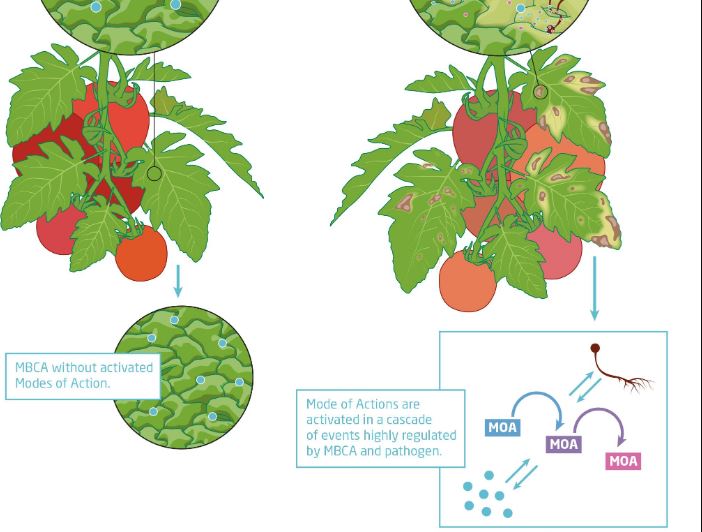


Recently, nuclear techniques have a significant role to play in facilitating the use and increasing the cost-effectiveness and safety of biological control agents, nuclear techniques can improve the efficiency of biological control by decreasing of the cost of production of bioagent, increasing host suitability and stimulation of biological process. Keywords: Rhizosphere microorganisms Plant diseases Phytopathogens Pesticides Biocontrol agents. This review focusses on how biocontrol microbes modulate plant defense mechanisms, deploy biocontrol actions in plants and offer new strategies to control plant pathogens. The potential of using living organisms, like insects, fungi, and bacteria were tested as biological control agents for weed management, and there are a novel approach offered by living organisms as agents for biological weed control, this weed management tool is evolving as an alternative to herbicides. In the field biological control of plant viruses, viruses cannot be directly controlled by chemical application, and the major means of control (depending on the disease) include: Chemical or biological control of the vector (the organism transmitting the disease). However, some species are beneficial because they can repress the activities of the harmful types this has led to the development of foods (Probiotics) that serve to increase numbers of the beneficial type. Also, chronic gut diseases can arise if pathogens in the gut flora begin to grow at high levels. In the field of biological control of human diseases, food borne Salmonella infections are a major public health concern worldwide, bacteriophages offer highly specific and effective biocontrol of such pathogens. Nematodes in soil are subject to infections by bacteria and fungi, this creates the possibility of using soil microorganisms to control plant-parasitic nematodes. In addition, in the field of biological control of insects, there are varieties of the bacteria, fungi and viruses are currently used for control of a broad range of crop and forestry pests and larvae of several blood-sucking pests of humans and domestic animals. Biological control of plant pathogens was applied and it can result from many different types of interactions between organisms. They are many environmental benefits of biological control including safety for humans and other non target organisms, reduction of pesticide residues in food, increased activity of most other natural enemies, and increased biodiversity in managed ecosystems, their advantages are numerous. The extreme complexity of interactions that can occur in the rhizosphere is highlighted and some potential areas for future research in this area are discussed briefly.Biological control is the suppression of damaging activities of one organism by one or more other organisms. Multiple microbial interactions involving bacteria and fungi in the rhizosphere are shown to provide enhanced biocontrol in many cases in comparison with biocontrol agents used singly. The significance of plant growth promotion and rhizosphere competence in biocontrol is also considered.

Urszula Wachowska1, Katarzyna Kucharska1, Magorzata Jdryczka2. Whenever possible, modes of action involved in each type of interaction are assessed with particular emphasis on antibiosis, competition, parasitism, and induced resistance. Microorganisms as Biological Control Agents against Fusarium Pathogens in Winter Wheat. The interactions of bacteria used as biocontrol agents of bacterial and fungal plant pathogens, and fungi used as biocontrol agents of protozoan, bacterial and fungal plant pathogens are considered. This review examines the microbial interactions that can take place in the rhizosphere and that are involved in biological disease control. Generally, saproptrophs or biotrophs such as mycorrhizal fungi grow in the rhizosphere in response to this carbon loss, but plant pathogens may also develop and infect a susceptible host, resulting in disease. The loss of organic material from the roots provides the energy for the development of active microbial populations in the rhizosphere around the root.


 0 kommentar(er)
0 kommentar(er)
